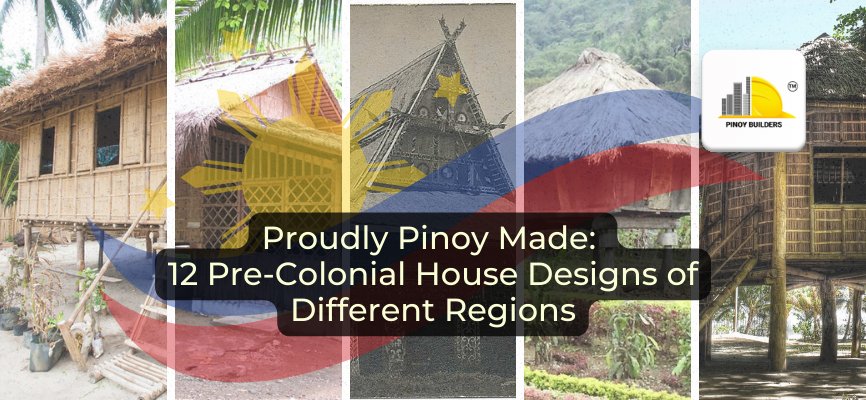The architectural heritage of the Philippines is as diverse as our islands and cultures. Each region boasts unique pre-colonial home designs that reflect our unique environment, lifestyle, and cultural identity. These indigenous architectures not only serve as a window into the wonderful tapestry of our past but also inspire us to appreciate the sustainable living practices we have developed to adapt to local climates.
To celebrate our country’s independence, we can begin to understand how pre-colonial home designs reconnect us, Filipinos, to our indigenous roots and cultural heritage. Above all, it reignites pride in the Filipino talent for building resilient homes. These architectural styles symbolize a time when communities thrived independently, embodying strong Filipino values of ingenuity, sustainability, and unity that are integral to national identity and celebration. To celebrate the beauty of Philippine tradition, let’s delve into 12 distinctive pre-colonial home designs from various regions across the Philippines.
Proudly Pinoy Made: 12 Pre-Colonial Home Designs of Different Regions
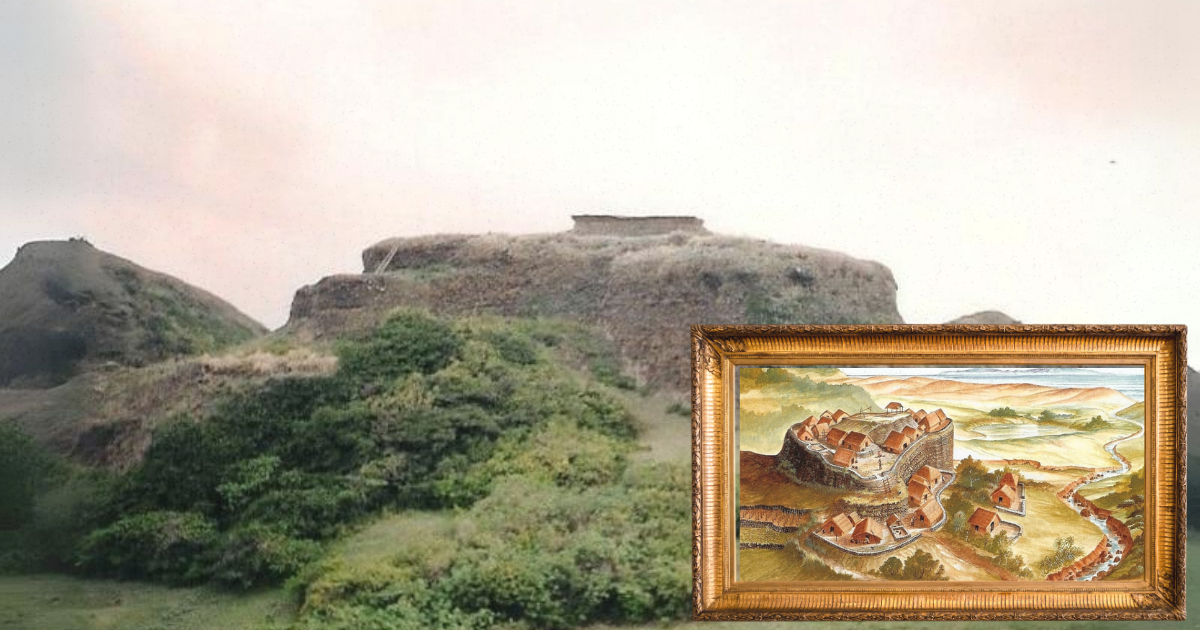
Image from Dr. Eusebio Dizon/Esquire
Pictured above: Pre-colonial Ivatan fortress located in Batanes Islands
The richness of pre-colonial Philippine architecture offers a glimpse into a time when communities lived in harmony with nature, utilizing local materials and craftsmanship to create homes that were both practical and culturally significant.
Preserving these architectural styles is not only important for historical reasons but also for promoting sustainable building practices that we can relearn and adopt today. Below are 12 wonderful proudly Pinoy-made home designs from the pre-colonial period.
1. Bale Houses of the Ifugao People (Cordillera Region)
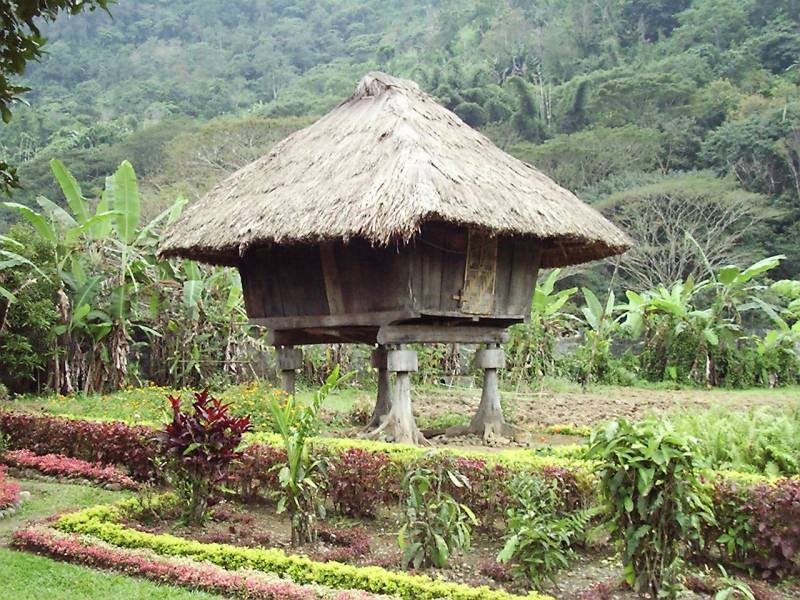
Image from Facebook/Philippine Architecture
The traditional Filipino home known as Bale exemplifies the resourcefulness of the Cordilleran people. Built on stilts using wood and bundled cogon grass for the roofing beam, these houses offered protection from the elements and potential enemies, thus reflecting the highland communities’ adaptive ingenuity.
The house looks like a pyramid on posts outside. Inside, it’s spherical with sloping walls and three levels: ground with posts, a living area accessed by a ladder, and a storage shelf.
2. Bahay Kubo/Kubo/Payag of the Tagalog People (Tagalog Region)
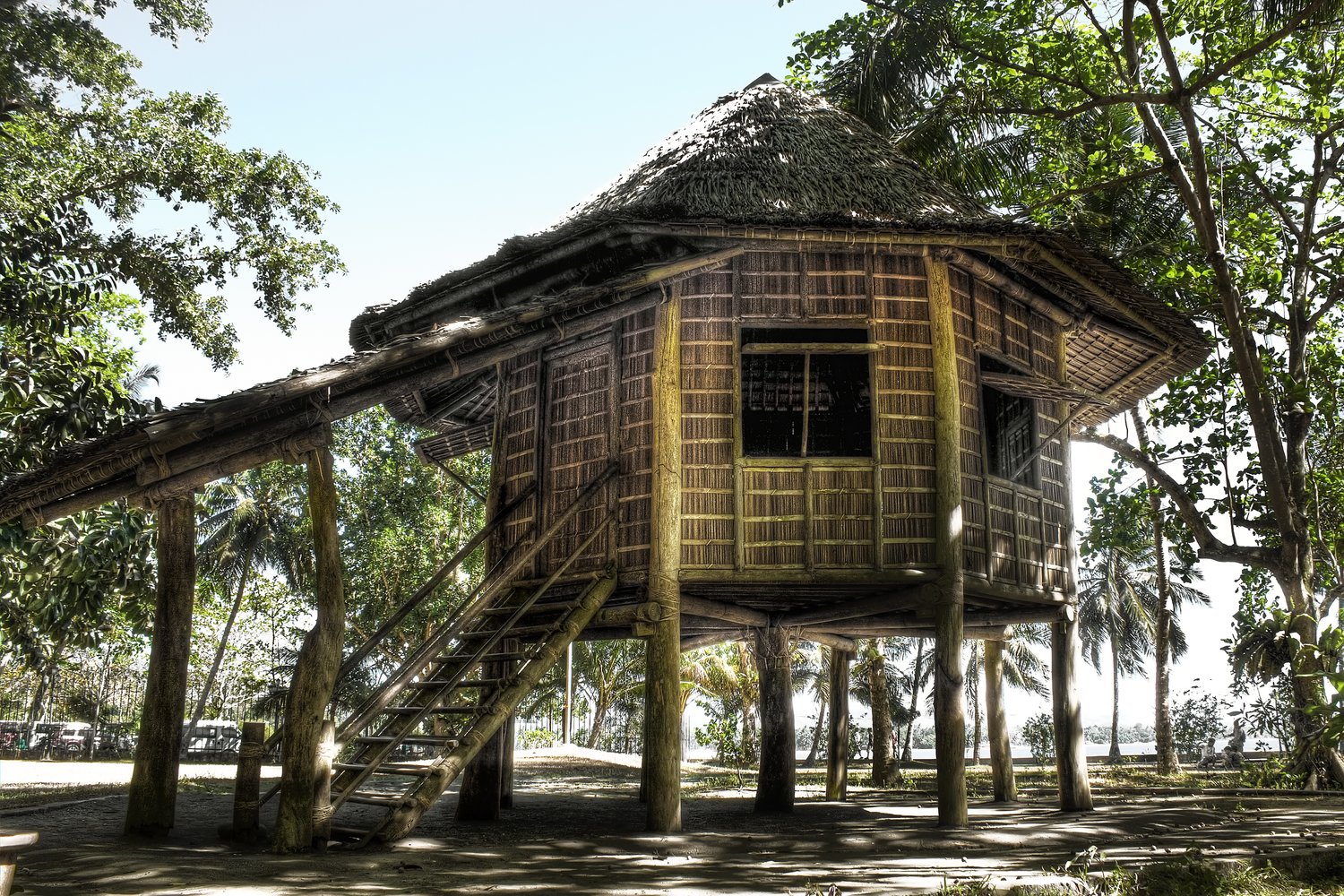
Image from Carmelo Bayarcal/Kollective Hustle
The iconic Bahay Kubo is synonymous with Filipino identity. Characterized by bamboo and thatch construction elevated on stilts, this design is perfectly suited to the tropical climate and communal living, embodying simplicity and functionality.
A bahay kubo has a rectangular floor plan raised on stilts, typically made of bamboo and a nipa palm roof. It features an open floor layout to maximize ventilation and a steeply pitched roof to shed rainwater effectively.
3. Lepa House of the Bajau People (Sulu Archipelago)
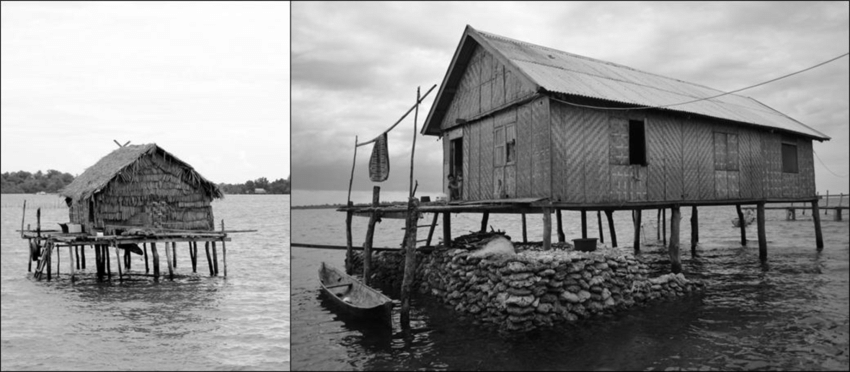
Image from ResearchGate
The Bajau stilt houses, known as Lepa, exemplify maritime adaptation. Constructed on stilts over water using driftwood and palm leaves, these homes reflect the nomadic seafaring lifestyle of the Bajau people and their deep connection to the sea.
4. Ibanag House of the Ibanag People (Cagayan Valley)

Raised on stilts with walls woven from rattan, traditional Ibanag houses are designed to withstand the region’s flood-prone environment. These structures promote community living and reflect the practical ingenuity of the Ibanag people in Northern Luzon.
An Ibanag house typically features a raised floor on wooden stilts, woven bamboo walls, and a thatched roof made of cogon grass or nipa palm leaves. It often has a rectangular layout, with ample ventilation and open spaces underneath for storage or livestock.
5. Torogan House of the Maranao People (Mindanao)
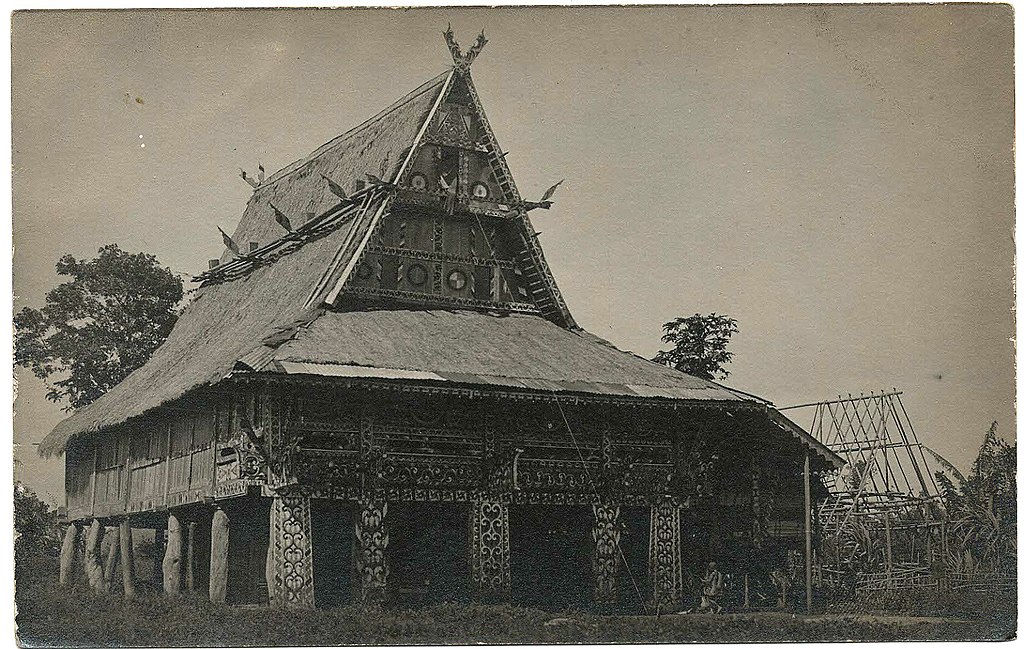
The Torogan house of the Maranaoans is a masterpiece of craftsmanship. Featuring elaborate wooden carvings (panolong) and intricate motifs (okir), these structures not only serve as residences but also symbolize social status and cultural pride among the Maranao people.
A Torogan house has distinct elevated wooden floors, intricate panolong, and soaring rooflines with distinctive okir motifs. It serves as a symbol of prestige and cultural heritage among the Maranao people.
6. Lumah House of the Yakan People (Basilan)
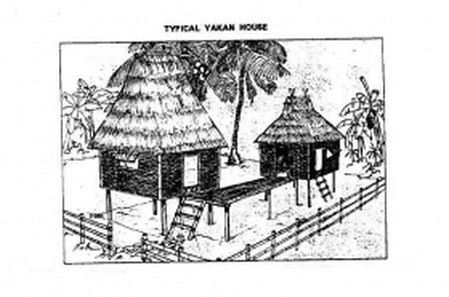
Image from History of Architecture
The traditional Yakan house, called a Lumah, is built on stilts. It has a raised living area and a steeply pitched roof made from thatched palm leaves or other natural materials to provide ventilation and shade from the sun and rain. The walls are typically constructed from woven bamboo or wooden planks.
Lumah houses are integral to Yakan culture and craftsmanship. These homes not only provide shelter but also reflect the artistic traditions of the people of Basilan.
7. Agta House of the Agta Negrito People (Sierra Madre)
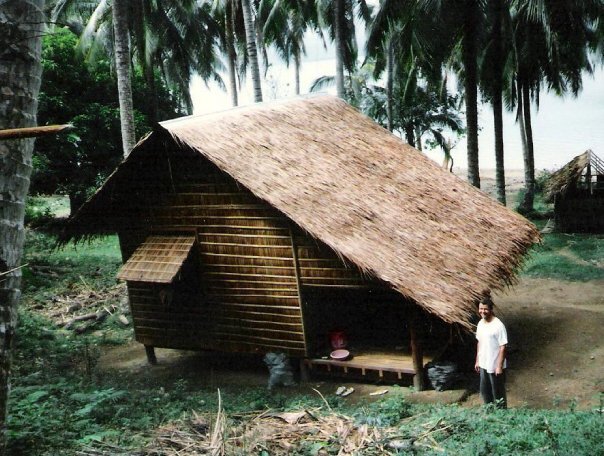
Image from Raise the Village
The Agta shelters are simple yet effective. They are designed for mobility and adapted to a foraging lifestyle in the forested Sierra Madre mountains. These open-sided structures with palm-thatched roofs embody the nomadic traditions and intimate relationship with nature.
The Agta people of the Sierra Madre have a traditional architectural style characterized by temporary shelters made from materials like bamboo and palm leaves. Their dwellings are typically small, lightweight structures designed for mobility within the forest environment.
8. Bahay Kubo of the Mangyan People (Mindoro)
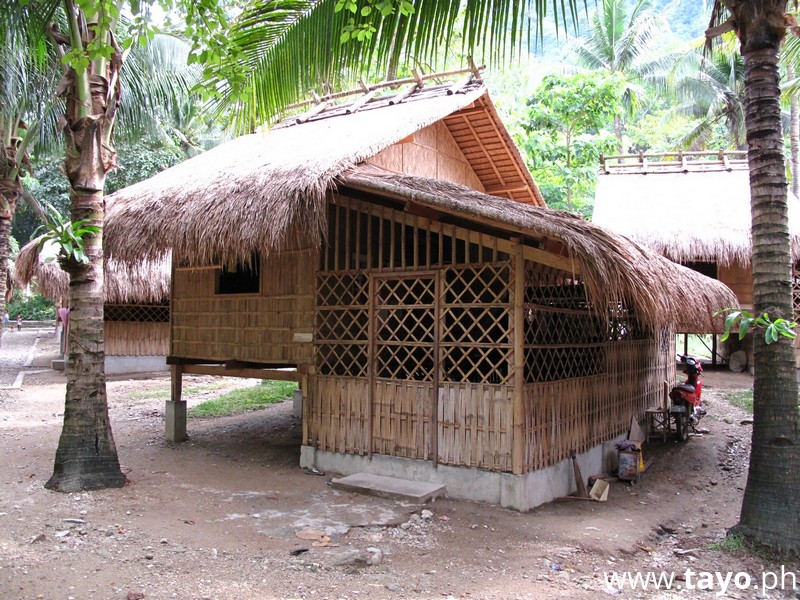
The Mangyan Bahay Kubo is raised on stilts with a bamboo framework and cogon thatch roof, blending seamlessly with the agricultural practices and spiritual beliefs of the Mangyan people in Mindoro. The materials and the design of the Mangyan Bahay Kubo closely resemble that of the Tagalog Bahay Kubo.
9. Hanunuo-Mangyan House (Mindoro)

Image from Semantic Scholar
Hanunuo houses are modest rectangular structures with thatched roofs and bamboo walls, reflecting the intimate connection between the Hanunuo people and their cultural practices in Mindoro.
10. Bay Sinug House of the Tausug People (Sulu Archipelago)
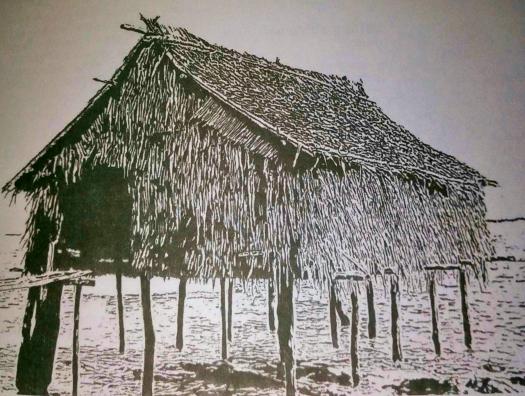
Image from ProProfs
Tausug houses, known as Bay Sinug, are tall structures with steeply pitched roofs made from bamboo and nipa palm. These homes are central to Tausug identity and community structure, reflecting their resilience in the face of the island’s challenges.
The Bay Sinug house is a stilted dwelling with a single large room, reflecting their communal living. Walls are traditionally made from natural materials like bamboo or timber, and the roof is thatched, showcasing their connection to the environment. Elevated porches around the main area provide extra space and ventilation, fostering a sense of community. The house may even be part of a secure fenced compound.
Overall, the Bay Sinug’s design embodies the Tausug way of life, valuing community, togetherness, and respect for nature.
11. Balay Cuyonon of the Cuyonon People (Palawan)
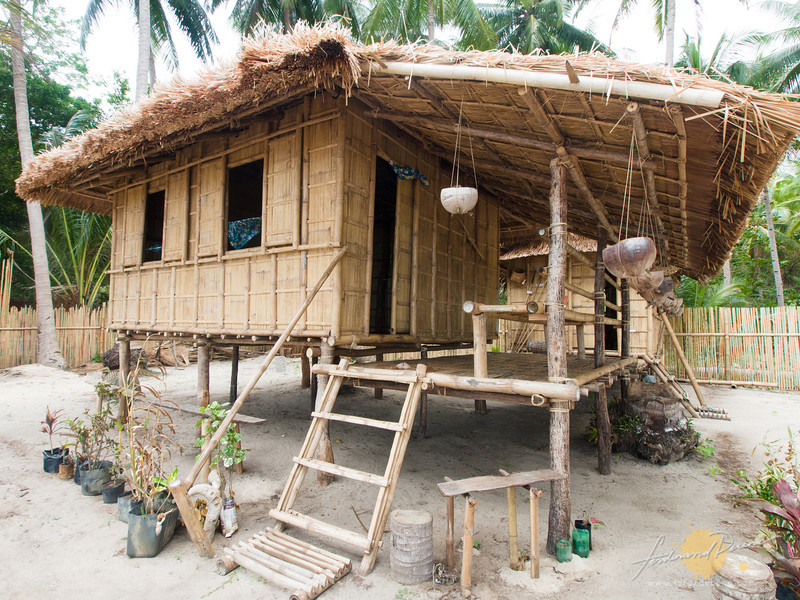
Palawan tribal houses, like the Balay Cuyonon, are elevated on stilts with woven bamboo walls and nipa palm thatch roofs. These structures embody communal living and deep respect for nature among Palawan’s indigenous communities.
12. Sinadumparan Stone House of the Ivatan People (Batanes)

Image from The Wandering Juan
Sinadumparan stone houses, also known as the Savidug Stone Houses of the Ivatan people are built for resilience against the harsh Batanes climate. They feature thick limestone walls for strength and insulation, and may even be partially underground for added wind protection.
Following a common trend in Filipino pre-colonial home design, cogon grass roofs thatched on top of a stone base complete the design. This architecture reflects the Ivatan’s remarkable adaptation to their environment that prioritizes security and communal living in a place known for typhoons and strong winds.
Celebrate Filipino Heritage and Embrace Traditional Home Designs
The diversity and significance of pre-colonial Filipino home designs highlight the ingenuity and cultural richness of the Philippines’ indigenous peoples. By preserving these architectural traditions, we not only honor our heritage but also find inspiration for sustainable building practices in modern architecture. Let us continue to appreciate and study these proud Pinoy-made designs to ensure they endure as symbols of resilience, creativity, and harmony with nature for generations to come.
References
Best, J., Fortin, J. R., & Chua, J. K. (2022, September 19). Tausug Tribe of Sulu: History, Culture and Arts, Customs and Traditions [Mindanao Indigenous People | Philippines Ethnic Group]. yodisphere.com. Retrieved June 13, 2024, from https://www.yodisphere.com/2022/09/Tausug-Tribe-Culture-Sulu.html
Cea, J. (2014, January 18). Mangyan – History of Architecture | PPT. SlideShare. Retrieved June 13, 2024, from https://www.slideshare.net/Huly0w/mangyan-history-of-architecture
Guide to the Philippines. (n.d.). Information about Savidug Stone Houses. Guide to the Philippines. Retrieved June 13, 2024, from https://guidetothephilippines.ph/destinations-and-attractions/savidug-stone-houses
Hernandez, Y. R. (n.d.). House model (Balbale). Mapping Philippine Material Culture. Retrieved June 13, 2024, from https://philippinestudies.uk/mapping/items/show/14911
ResearchGate. (n.d.). Figure 2. The settlement of Bajau was initially dispersed houses… ResearchGate. Retrieved June 13, 2024, from https://www.researchgate.net/figure/The-settlement-of-Bajau-was-initially-dispersed-houses-left-A-typical-stilt_fig1_316451853
Suralta, B. B. (2022, April 22). The Pre-Hispanic Castles of the Ivatan. Esquire Philippines. Retrieved June 13, 2024, from https://www.esquiremag.ph/long-reads/features/batanes-ivatan-pre-colonial-castles-a2765-20220422
UPD Journals. (n.d.). Ivatan Heritage Architecture: A Survey of Different House Types and Their Evolution | MUHON: A Journal of Architecture, Landscape Architecture, and the Designed Environment. UPD Journals. Retrieved June 13, 2024, from https://journals.upd.edu.ph/index.php/muhon/article/view/6304
Wikipedia. (n.d.). Bahay kubo. Wikipedia. Retrieved June 13, 2024, from https://en.wikipedia.org/wiki/Bahay_kubo
Wikipedia. (n.d.). Torogan. Wikipedia. Retrieved June 13, 2024, from https://en.wikipedia.org/wiki/Torogan


